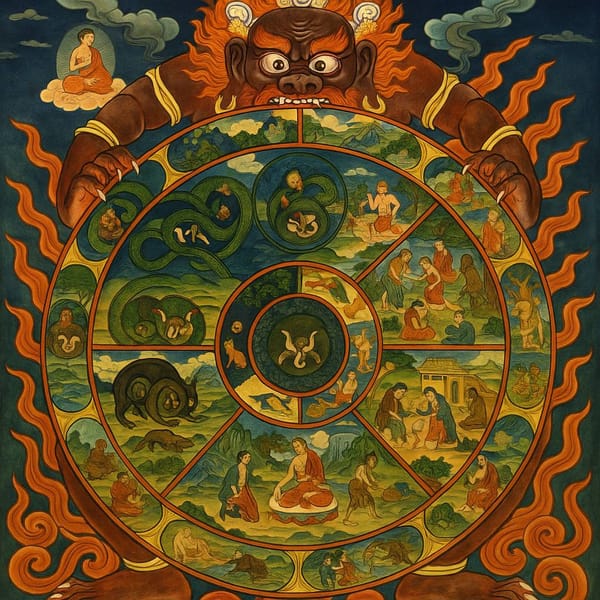The Nervous System of Love: How Embodied Coherence Rewrites Generations

Love, when stripped of story, is signal.
It is not just chemistry or compatibility.
It is what your nervous system does in the presence of another.
When I say love, I don’t mean fantasy, projection, or co-dependence.
I mean the kind of love that stabilizes the heart rate.
The kind that reorganizes inherited fear.
The kind that rewires a lineage not through grand declarations, but through presence.
In the world I come from, love was rarely safe.
There were mothers who couldn’t mother.
Men who disappeared in silence.
Touch that felt like obligation.
And bodies that never learned to feel rest.
This isn’t just emotional.
It’s biological.
What we call “trauma” is not only pain. It is unprocessed signal—stuck energy in the body, passed through generations, until someone feels it without flinching.
I was called to become that someone.
Love Begins in the Nervous System
What most people don’t realize is this:
We don’t perceive the world as it is.
We perceive it as our nervous system allows.
Sight, sound, threat, and trust are all filtered—through the vagus nerve, the fascia, the breath, the gut.
By the time we’re “thinking” about something, our body has already made its decision.
The mind is an interpreter. The body is the receiver.
This is why love is not a choice.
It is a state of coherence—a signal the body recognizes as safe, even before language arrives.
In trauma, that recognition gets scrambled.
We mistake anxiety for passion.
We chase collapse as intimacy.
We override the body’s “no” and call it sacrifice.
Healing means remembering what a “yes” feels like again.
I Found Love in HRV Data
For months, I tracked my HRV—heart rate variability.
HRV shows how safe your nervous system feels. How well you adapt. How well you love.
And I noticed something profound.
When I felt loved, witnessed, and met—not fixed or praised, but met—my HRV rose.
My body entered the ventral vagal state—the biological state of trust, intimacy, and presence.
This wasn’t an affirmation.
It was proof.
I wasn’t just feeling good.
I was becoming more biologically alive.
My immune system activated.
My digestion improved.
My breath deepened.
This is what love is meant to do:
Regulate, not stimulate.
Restore, not perform.
Trauma Is Not Sadness. It’s Incomplete Signal.
Most people still think trauma is about an event.
It’s not.
It’s about what didn’t get to happen.
The scream that never left the throat.
The run that never launched.
The tears that got tucked behind a smile.
That energy stays in the body.
It distorts breath. Alters posture. Fractures sleep. Silences instinct.
And yes—it gets passed on. Through epigenetic markers.
What the body can’t complete, the next generation inherits.
But here’s the miracle:
So does healing.
When I track my own HRV, breathe into ancestral grief, and restore coherence—
I’m not just healing myself.
I’m rewiring the blueprint for whoever comes next.
Love as Field Repair
A truly coherent relationship isn’t built on promises.
It’s built on presence.
It doesn’t mean we never collapse.
It means we don’t leave when collapse happens.
To love someone well is not to fix them.
It is to stay close when they forget how to feel.
To witness when their body goes quiet.
To say with your nervous system:
I’m here. I’m not afraid of your silence. I won’t abandon your pain.
This is how trauma gets completed.
Not in therapy rooms or self-help books alone—
but in the micro-moments of relational nervous system repair.
It’s a slow dance.
It requires self-regulation.
And it asks that we remember:
The other is not the Divine.
But they might be holding a piece of Her, just long enough for us to remember.
The Weight and Power of Ancestral Memory
My DNA holds Dutch, Germanic, Breton, and Slavic threads.
Inside that:
Camps.
Shock therapy.
Silence.
Disappeared mothers.
Sisters who had to harden to survive.
This is not just history.
It is field memory.
And it lives in the nervous system.
When I learn to breathe deeply, to feel safely, to love without collapse—
I am doing what they couldn’t.
I am ending what they survived.
I am becoming a body where it stops.
We are not here to transcend our bloodline.
We are here to complete it.
For the One in Collapse
If someone you love is flat, numb, anxious, withdrawn—it doesn’t mean they’re broken.
It might mean they are in the dorsal vagal state—a form of biological shutdown.
Their body is overwhelmed.
Their system is doing the only thing it knows how: freeze, collapse, survive.
They don’t need your solutions.
They need your signal.
You don’t have to fix them.
You only have to stay.
Ask them where they feel it.
Not what it means.
Just feel. Together. Without flinching.
This is how a nervous system learns that it’s safe to come home.
Love Is a Biological Invitation
We often think love is about choosing the right person.
But real love is about becoming the kind of signal another nervous system can trust.
It is not earned.
It is offered.
It is what happens when presence becomes regulation.
This is not romantic.
It is evolutionary.
It is what turns trauma into memory.
Memory into music.
Music into a child who grows up safe in their own skin.
This is not metaphor.
It is measurable.
And it begins with you.




